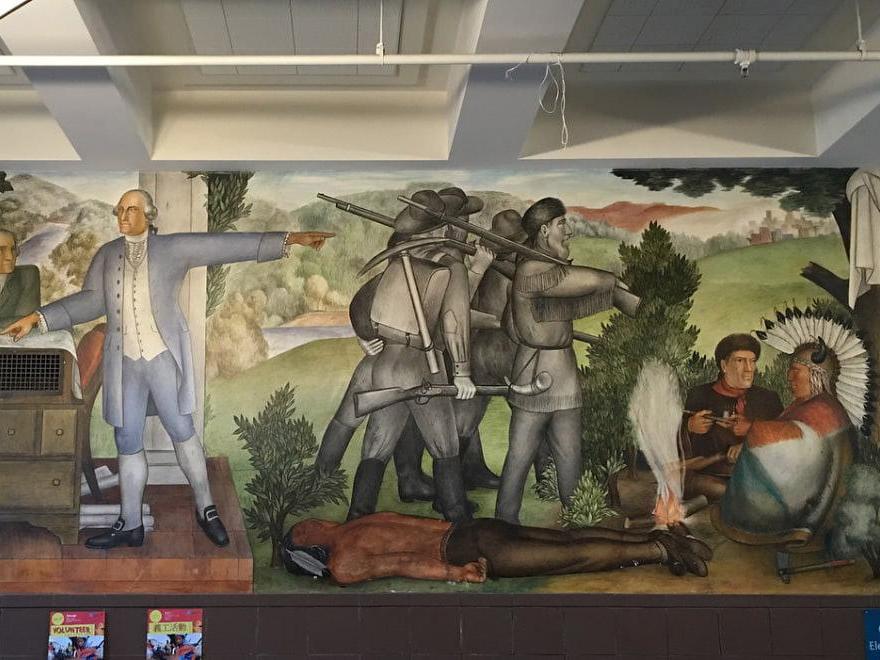Murals of George Washington including slaves and a dead Native American to be covered up after unanimous vote
‘The content and the art quality is priceless. Every day — in contrast to opponents — teachers, librarians use it as a teaching point.’

The San Francisco Board of Education voted unanimously this week to cover a series of murals at George Washington High School that includes images of a dead Native American and slaves at work.
Debate about the series of 13 murals, called The Life of George Washington, has been going on for over half a century but has heated up in the past couple of years.
The seven-member board’s decision came on Tuesday, during the panel’s last meeting of the school year.
“I didn’t know how the board would vote, but it was important that we not put this off any longer,” Stevon Cook, the board’s president, said on Thursday night.
Those in favour of covering the murals have said some of the images are offensive to various groups.
How my ancestor, James Ramsay, helped end slavery
Show all 2Some in favour of keeping them see artistic value in the work, which was created in the 1930s for the Works Progress Administration by Victor Arnautoff, a Russian-born artist, social realist and communist who was critical of the country’s first president.
To critics who claim the school board is trying to cover up history, Mr Cook had choice words.
“There’s been this whole discussion about whitewashing history as if a mural is the only way to talk about history,” Mr Cook said, “or as if that history is an accurate depiction of the full experiences of people of that time.
“I think that argument really limits the nuances in how dynamic that time was and all the contributions African slaves made to the country, that indigenous Americans gave to settlers.”
Mr Cook said he wanted to get the vote out of the way so the board could move on to bigger issues, such as the school district’s widening achievement gap and chronic absenteeism.
Some were not pleased with the board’s decision. One of those was Lope Yap Jr, the vice president of the school’s alumni association.
“The content and the art quality is priceless,” Mr Yap said. “Every day — in contrast to opponents — teachers, librarians use it as a teaching point. No matter where I go, no matter who I meet, 85 per cent of people are in favour of retaining the murals.”
Mr Yap said the murals serve as “reminders of what was, what is and what should never happen again”.
“What better place,” he said, “to have these kinds of discussions while a student is going through their educational process.”
He said those who want to preserve the murals would consider legal action.
Three months ago, when the issue began making headlines, the Russian Community Council of the USA created an online petition to preserve Mr Arnautoff’s murals.
As of Thursday, more than 1,000 people had signed it. The group’s goal is 1,500.
The school board has yet to decide whether the murals will be covered with panels or painted over.
Covering the murals with panels would cost between $600,000 (£472,000) and $845,000 (£665,000) and would be completed within the next two years, Mr Cook said.
Painting would first require an environmental impact study that would cost about $500,000 (£394,000).
The cost of the painting would be on top of the bill for the study and would extend the timeline.
The New York Times
Subscribe to Independent Premium to bookmark this article
Want to bookmark your favourite articles and stories to read or reference later? Start your Independent Premium subscription today.

Join our commenting forum
Join thought-provoking conversations, follow other Independent readers and see their replies